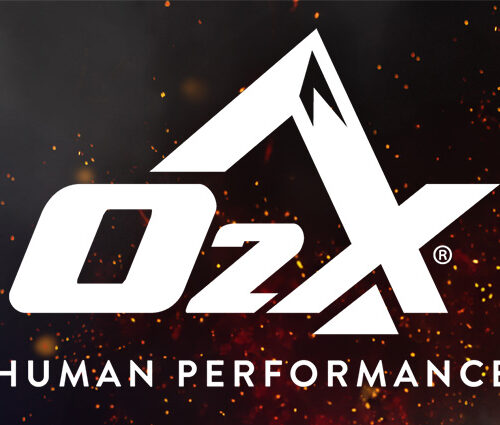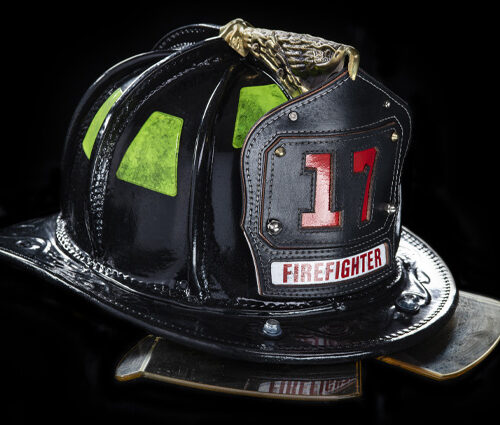
Firefighters encounter extreme situations more frequently in any given week than many people do throughout their entire lives. The dangerous conditions a fireground presents can lead to a number of injuries and even fatalities, but often in ways one would not expect.
A study conducted from 1977 to 2002 found that 45% of all on-duty firefighter deaths were the result of cardiac events. What’s more, 36% of these fatalities were directly correlated to fire suppression activities – tasks that involve immense exertion in high-heat environments.
More recently, the National Fire Protection Association (NFPA) published a report in 2022 examining the leading causes of injury on the fireground and came to a similar conclusion regarding the extreme nature of fire suppression activities. It found that 54% of all reported on-duty injuries resulted from exposure to heat and flame and overexertion.
Given that firefighters’ daily duties repeatedly put them in harm’s way, it’s important to make sure all efforts are being made to focus on health and safety. Prioritizing getting enough sleep, eating a healthy diet and limiting alcohol consumption are often talked about, but there’s another way to promote firefighters’ well-being – careful consideration of their turnout gear.
While turnout gear’s main function is to help protect a firefighter from high heat, direct flame, sharp objects and more, it should also address the management of heat stress, a significant contributing factor of cardiac illness.
Understanding Heat Stress
Anyone who has donned and worked in turnout gear knows that sweating in their pants and jacket is a given. While today’s turnout gear is designed to provide protection against the challenges of the fireground, in some instances, it might contribute to increased overheating.
“When firefighters are running into a burning building or even just doing perimeter control, it takes very little effort in the gear they’re wearing to increase their body temperature,” said Jennifer Wise, structural firefighting/CBRN market specialist at W.L. Gore & Associates.
Instead of focusing solely on turnout gear’s thermal protection, firefighters need to be just as aware of how their garments can help to keep their body temperature in check. But how hot is too hot when you’re confronted with a fire?
The effects of heat stress begin to affect firefighters with even the slightest increase in body temperature. An increase to 99.5 degrees Fahrenheit, just 0.9 degrees higher than what is considered normal, will begin to impact one’s hearing. At this temperature, it’s easier to miss audible signals and firefighters may not react appropriately to certain noises.
A mere 0.4 degree additional increase begins to put firefighters in a true danger zone, as heat exhaustion sets in and it’s far more likely that medical aid will be needed. If a firefighter continues to work despite overheating and their body temperature reaches 100.2 degrees Fahrenheit, the chance of injury becomes very real.
At this temperature, motor control begins to diminish, leading to a loss in dexterity. It may also contribute to slower response speeds, making it dangerous to work in an environment where conditions can change at a moment’s notice.
If a firefighter’s body temperature reaches 100.9 degrees Fahrenheit and they continue to operate on the fireground, significant cognitive impairment can occur. Under these conditions, it can be difficult to recall information, solve simple problems and think quickly. This level of heat stress presents a significant safety concern and can contribute to a cardiac event.
How Breathability Plays a Role
Since a firefighter’s body temperature can rise quickly during fire suppression activities, it’s important to make sure their turnout gear aids in reducing the effects of heat stress. Their PPE needs to strike a balance between offering protection while remaining comfortable to work in and, most importantly, breathable.
Our bodies are constantly exchanging heat with our environment, whether we’re on the fireground or sitting at a desk. The clothing we wear plays a role in modifying this heat transfer and in some cases, can be detrimental.
“If the heat gains to the body, either coming from the environment or through internal heat generation due to work, cannot be balanced by heat dissipation away from the body, excess heat will build and core temperature will begin to rise,” said Wise.
Even more important than the outer shell or thermal liner, the moisture barrier is the primary layer that affects turnout gear’s level of heat dissipation. It’s measured by two factors: total heat loss (THL) and resistance to sweat evaporation (RET).
The higher a material’s THL is, the easier time a firefighter will have shedding excess body heat. The lower the RET, the better the moisture barrier is in aiding the evaporation process. While the science behind breathability can be complex, selecting MSA’s Globe turnout gear makes it easy to help manage heat stress.
Mitigating Heat Stress with Globe Athletix
With firefighter health and safety at the forefront, MSA has developed turnout gear that aids in breathability and helps promote sweat evaporation. Manufactured to meet NFPA 1971 standards, their Globe ATHLETIX turnout gear combines several features to help mitigate the effects of heat stress.
Part of what makes this possible with Globe ATHLETIX is the use of the GORE-TEX CROSSTECH black moisture barrier. This material has a low RET value which makes it highly breathable, and it’s been designed to maintain its performance after multiple heat exposures and wash cycles.
“It’s highly breathable in a broad range of conditions to help manage heat stress better,” said Wise.
The GORE-TEX CROSSTECH black moisture barrier remains thermally stable even after being exposed to extreme heat and protects the body from common fireground hazards while complying with the NFPA 1971 standard.
However, it’s not just the moisture barrier in Globe ATHLETIX that helps manage heat stress. The design of the pants and jacket also plays a significant role.
“The performance of the garment is amplified based on the garment’s design as well as its materials composite, meaning that in both the jacket and pants we have a more streamlined design that reduces oversizing and bulk throughout the garment,” said Caitlin Kelly, segment marketing manager for MSA’s Globe products. “Traditional turnout gear is oversized to allow for air trapped between the composite layers to insulate firefighters from heat. Today’s technical fabrics used in Globe ATHLETIX turnout gear allow a more body-contoured fit with less bulk that promotes breathability.”
Instead of fighting against your turnout gear, the unique stretch material used for the Globe ATHLETIX outer shell moves with firefighters when they’re working, and flex points at the waist, knees, elbows and shoulders maximize firefighters’ range of motion. These detailed design elements make it easier for firefighters to get the job done on the fireground, with grip tabs on the jacket pockets and angled pockets on the pants.
Globe ATHLETIX turnout gear also features reflective 3M Scotchlite Comfort Trim that’s heat-sealed onto the garments. Not only does this aid in further flexibility of the material, but it also helps to release body heat.
“The development of Globe ATHLETIX turnout gear, in partnership with industry partners like W.L. Gore & Associates, aligns with our mission at MSA to bring premium performance products to market that advance firefighter protection and safety,” said Kelly. “Despite how physically fit firefighters may be, we want to build the best gear we can to help them.”
By Courtney Levin, FireRescue1 BrandFocus Staff
This article reprinted with permission of FireRescue1.






